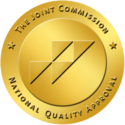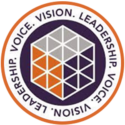Stimulant Addiction Treatment in Idaho
Stimulants are a class of drugs becoming more and more common to the everyday individual. Whether prescribed by a doctor or used irresponsibly on a recreational basis, stimulants are more prevalent in today’s society than ever. Oftentimes, stimulant use can lead to stimulant abuse, and stimulant abuse can lead to addiction; pretty soon, those who were taking what may have been a controlled dosage are experiencing the perils of addiction.
Even though a person may be struggling with addiction, they’re not completely gone. Thankfully, there is hope at Eagle Creek Ranch Recovery’s men’s only rehab in Nampa and Boise, Idaho. This hope comes in the form of rehab, and plenty of facilities are available. There are a variety of options for stimulant addiction rehab in Idaho.

Stimulant drugs are a category of substances that elevate certain types of human activity, both physically and mentally. They increase alertness, attention, and energy, as well as elevate blood pressure, heart rate, and breathing rate. Examples of stimulants include drugs like caffeine, nicotine, amphetamines, and cocaine. While some stimulants have legal medical uses, others are prohibited due to their high potential for abuse and addiction.
Stimulants, often referred to as ‘uppers’, temporarily enhance alertness and energy. The most commonly used stimulants are caffeine and nicotine, ubiquitous in coffee and cigarettes, respectively. Prescription stimulants, such as Adderall and Ritalin, are typically used to treat attention deficit hyperactivity disorder (ADHD). Illicit stimulants include substances like cocaine, methamphetamine, and ecstasy (MDMA), which are frequently misused for their euphoric effects.
Stimulants interact with the brain’s neurotransmitters – the chemicals that serve as messengers between brain cells. They increase the levels of dopamine and norepinephrine, which are associated with pleasure, movement, and attention. By amplifying these chemicals’ actions, stimulants can enhance focus and attention, and reduce fatigue and appetite.
How Does Stimulant Abuse Impact the Brain and Body?
Stimulant abuse significantly impacts both the mind and body, often leading to serious health problems. In terms of mental effects, abuse of these substances can lead to heightened anxiety, paranoia, and even severe psychiatric disorders over time. Excessive stimulation of the nervous system can also result in physical side effects; these include increased heart rate, high blood pressure, and potential damage to the cardiovascular system. Prolonged use can even lead to malnutrition due to decreased appetite. Sleep disorders can also arise due to the disruption of natural sleep patterns.
Signs and Symptoms of Stimulant Abuse
Stimulant abuse can often be identified through a range of physical and behavioral symptoms. Physically, individuals may exhibit restlessness, insomnia, rapid weight loss, and dilated pupils. They might also have physical health issues such as increased heart rate, high blood pressure, and in severe cases, seizures.
From a behavioral perspective, a person abusing stimulants may demonstrate hyperactivity, euphoria, excessive talkativeness, and an increased sense of self-confidence. However, as the effects of the stimulant wear off, they may experience mood swings, anxiety, and depression. It’s also important to note that these symptoms can vary greatly in intensity and duration, depending on the type and quantity of stimulant used.
Contact Eagle Creek Ranch
Recovery Today!
Why Wait? Find The Help You Need By Reaching Out To Us Today! Our Admissions Team Is Standing By.
What Are the Effects of Stimulant Drugs?
Stimulant drugs, such as cocaine, methamphetamine, and ADHD medications, can significantly impact the human body and mind. These substances increase dopamine, norepinephrine, and other neurotransmitters in the brain, leading to heightened alertness, attention, and energy. However, misuse of stimulants can result in negative effects including increased heart rate, high blood pressure, insomnia, and anxiety. Long-term use may lead to severe health issues such as heart disease, stroke, and mental disorders like paranoia or psychosis.

Withdrawal Symptoms of Stimulant Abuse
Stimulant abuse can lead to a host of withdrawal symptoms when usage is ceased or significantly reduced. These symptoms may include fatigue, depression, disturbed sleep patterns, and intense cravings for the stimulant. Additionally, individuals may experience physical symptoms such as muscle pain and stomach discomfort. In severe cases, the person might have symptoms such as agitation, paranoia, and hallucinations. It’s crucial to seek professional help for stimulant withdrawal to manage these symptoms effectively and safely.
How Do People Develop Stimulant Drug Addiction?
Stimulant drug addiction often develops as individuals repeatedly use these substances to achieve a heightened state of focus, energy, or euphoria. With prolonged use, the brain changes its reward center, leading to increased cravings and continued use despite harmful consequences. Tolerance can build over time, requiring larger doses to achieve the same effects, which can further accelerate the cycle of addiction. It’s crucial to understand that addiction is a complex disease, not a moral failing, and it often requires professional help and support for recovery.
Who is Most at Risk of Stimulant Abuse?
Individuals most at risk for stimulant abuse include adolescents and young adults, particularly those immersed in high-pressure environments like competitive schools or jobs. There’s also a higher risk among those with a history of substance abuse or mental health disorders. Stimulant abuse is also prevalent among individuals seeking to improve athletic performance or lose weight. This is due to the drugs’ performance-enhancing and appetite-suppressing properties.
How Many People Are Addicted to Stimulants?
Stimulant addiction is a global concern, with millions of people affected. Some reports suggest that approximately 18 million people worldwide use cocaine and 27 million people use amphetamines. However, it is important to note that this data is likely an underestimate; many cases of addiction go unreported due to stigma and lack of access to treatment facilities.
Stimulant Addiction Treatment
Stimulant addiction is a serious and often debilitating condition, but with the right treatment, recovery is possible. Treatment often includes a combination of medical and therapeutic strategies. Medical interventions typically involve the detoxification process, where the body is safely weaned off the stimulant under medical supervision.
After detox, therapeutic approaches are pursued. These include behavioral therapy, cognitive-behavioral therapy (CBT), and motivational incentives. These therapies are designed to change the patient’s behaviors and attitudes toward drug use. They also increase healthy life skills and continue with long-term follow-up to prevent relapse.
Residential treatment also known as inpatient rehab is an intensive program designed to treat serious addictions. It typically involves a structured schedule of individual and group therapy sessions, educational lectures, and supervised recreational activities. Patients live within the facility and are monitored 24/7 to ensure a safe, drug-free environment. Medical supervision aids in managing withdrawal symptoms and any potential complications from detoxification.
A multi-disciplinary team of healthcare professionals works together to provide a holistic approach to recovery, addressing not just the physical aspects of addiction, but also the psychological and social factors. This comprehensive approach aims to provide patients with coping strategies and tools to maintain long-term sobriety after they leave the treatment facility.
Outpatient treatment for stimulant addiction typically involves a combination of behavioral therapies and support meetings. This model allows individuals to stay in their home environment and maintain their daily routines while receiving treatment. Behavioral therapies, such as cognitive-behavioral therapy (CBT) and contingency management (CM), are often employed.
CBT helps patients recognize, avoid, and cope with situations likely to trigger substance use. CM, on the other hand, uses positive reinforcement to encourage sobriety. Alongside these therapies, patients often participate in group meetings or support circles, providing an avenue for mutual encouragement and shared experiences. Please note, that medical advice should always be sought from a qualified healthcare professional.
Medical detoxification for stimulant addiction works by systematically and safely withdrawing the individual from the drug. This occurs while also managing the uncomfortable and potentially dangerous withdrawal symptoms that may occur. The process typically commences under the supervision of a healthcare provider; this individual may administer medications to alleviate withdrawal symptoms such as anxiety, agitation, and intense cravings.
Medications used in detox settings help stabilize the individual’s physical condition and make them more comfortable. Alongside medication, the detox process also involves comprehensive psychological support and counseling to help the individual navigate through the emotional aspects of withdrawal. This integrated approach aims to provide a solid foundation for ongoing addiction treatment and recovery.
Why Does Individualized Treatment for Stimulant Addiction Matter?
Individualized treatment for stimulant addiction is crucial because it acknowledges the unique circumstances, needs, and recovery goals of each person. Addiction is a complex disorder, often interwoven with mental health issues, social factors, and individual health conditions. A one-size-fits-all approach fails to address these intricacies, potentially leading to ineffective treatment and a higher risk of relapse. Conversely, tailored treatment plans incorporate therapies and strategies that resonate with the individual’s experiences, boosting the likelihood of a successful, sustained recovery.
Receive Help for Drug Addiction at Eagle Creek

At Eagle Creek Recovery, we offer individuals struggling with stimulant addiction comprehensive, compassionate care. Through a combination of therapy, counseling, and medical intervention, we empower people to recover.
At Eagle Creek Recovery in Nampa, ID, our team of healthcare professionals is committed to providing personalized, patient-centered care; we recognize that each person’s journey to recovery is unique, therefore their treatment should reflect that. If you or a loved one would like to find out more, you can contact us here.

Clinical Director
Kendall Maloof is the clinical director at Eagle Creek Ranch Recovery. She is a licensed marriage and family therapist and has held multiple leadership roles before settling here at Eagle Creek. Kendall received her master’s degree in marriage and family therapy from the Chicago School of Professional Psychology in 2016. Her career in mental and behavioral health began in 2014 when she took up internships in both the nonprofit and for profit sectors. She interned at multiple reputable companies, such as The Living Success Center and 449 Recovery in California.
In 2019, Kendall became the clinical director of Sunsets Recovery for Woman, a dual diagnosis program in southern California. Kendall is a natural leader. She has an incredible ability to problem solve and stay calm in any situation. Kendall never fails to show up when she is needed, and her calm demeanor makes her team and clients feel at ease. Eagle Creek Ranch Recovery is proud to have Kendall as our clinical director.


